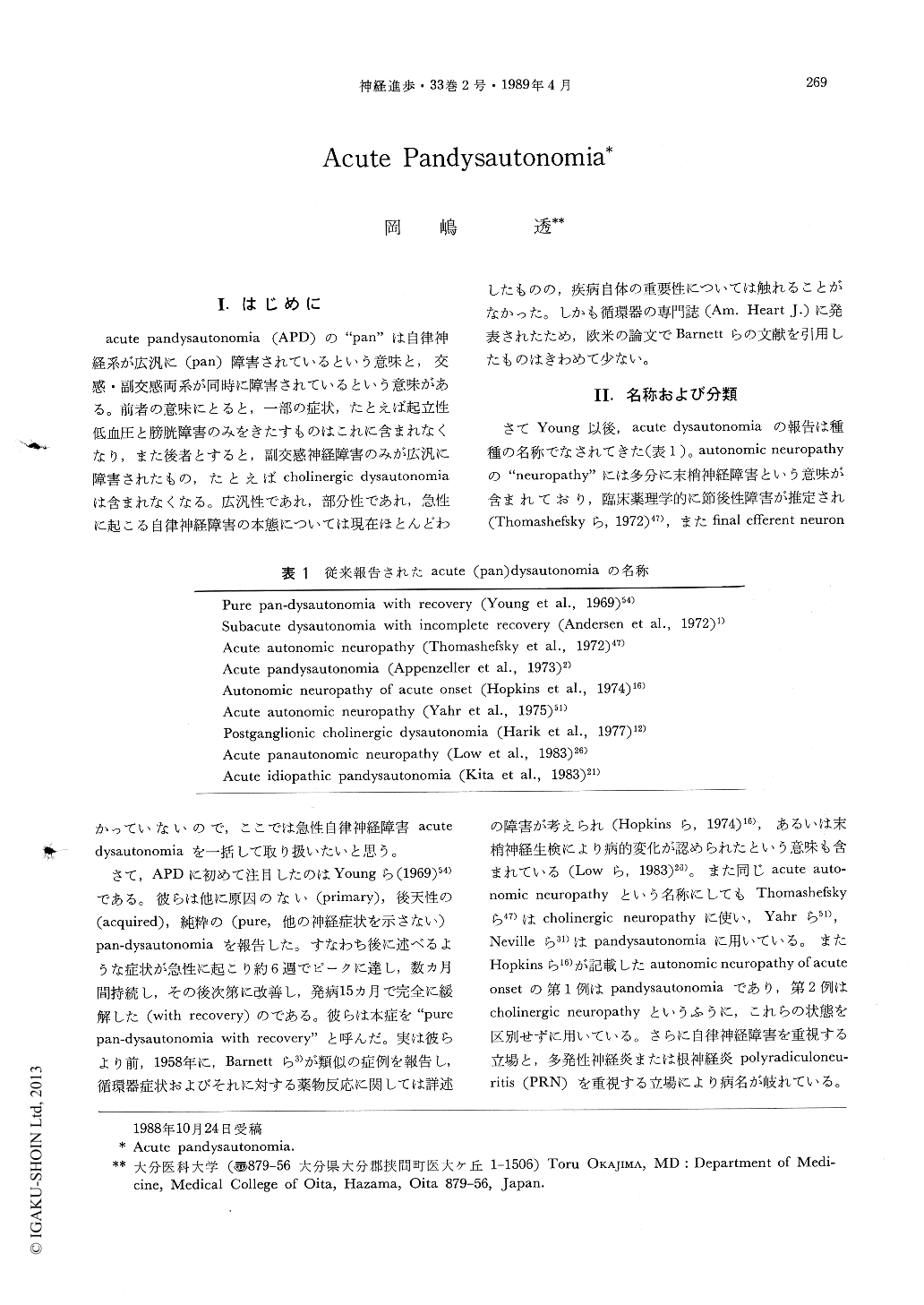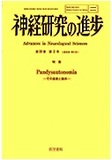Japanese
English
- 有料閲覧
- Abstract 文献概要
- 1ページ目 Look Inside
I.はじめに
acute pandysautonomia(APD)の"pan"は自律神経系が広汎に(pan)障害されているという意味と,交感・副交感両系が同時に障害されているという意味がある。前者の意味にとると,一部の症状,たとえば起立性低血圧と膀胱障害のみをきたすものはこれに含まれなくなり,また後者とすると,副交感神経障害のみが広汎に障害されたもの,たとえばcholinergic dysautonomiaは含まれなくなる。広汎性であれ,部分性であれ,急性に起こる自律神経障害の本態については現在ほとんどわかっていないので,ここでは急性自律神経障害acute dysautonomiaを一括して取り扱いたいと思う。
さて,APDに初めて注目したのはYoungら(1969)54)である。彼らは他に原因のない(primary),後天性の(acquired),純粋の(pure,他の神経症状を示さない)pandysautonomiaを報告した。すなわち後に述べるような症状が急性に起こり約6週でピークに達し,数ヵ月間持続し,その後次第に改善し,発病15ヵ月で完全に緩解した(with recovery)のである。彼らは本症を"pure pandysautonomia with recovery"と呼んだ。
Acute dysautonomia has been reported in various terms. Acute pandysautonomia (APD) was originally described as a 'pure' entity with exclusive involvement of the autonomic nerves (Young et al., 1969), but in the subsequent reports, not a few cases with paresthesia or slight sensory deficit were seen. Acute dysautonomia with severe sensory or sensorimotor disturbances were also reported. On the autonomic disorders, there were no differences among these conditions, so I made a following classification, and clinical features were analyzed in 51 cases reported.
1) acute idiopathic pandysautonomia (AIPD)
2) acute post- or parainfectious pandysautonomia (APPD)
3) acute autonomic and sensory neuropathy (AASN)
4) acute autonomic and sensorimotor neuropathy (AASM)
5) acute cholinergic neuropathy (ACN)
6) unclassified

Copyright © 1989, Igaku-Shoin Ltd. All rights reserved.


